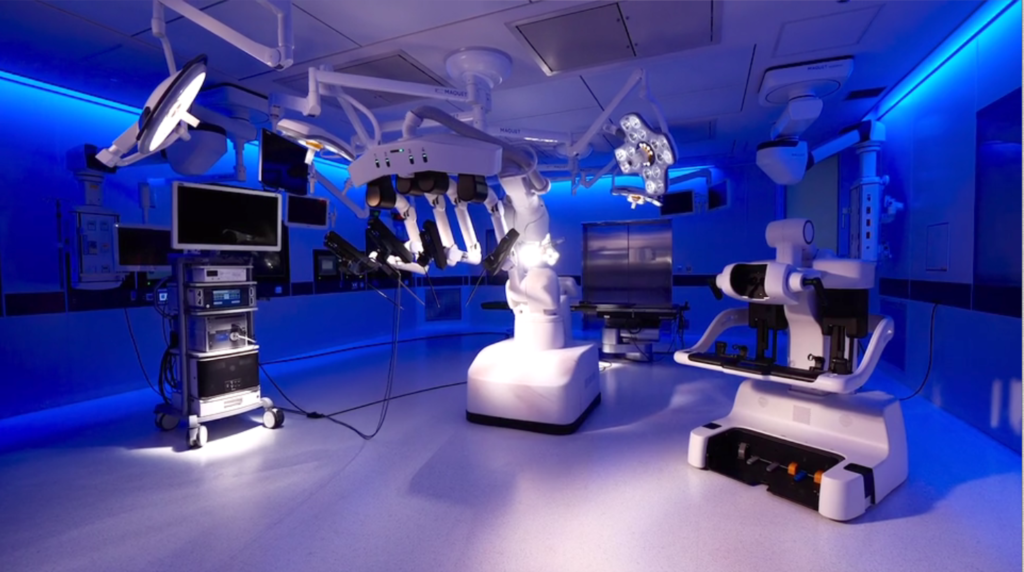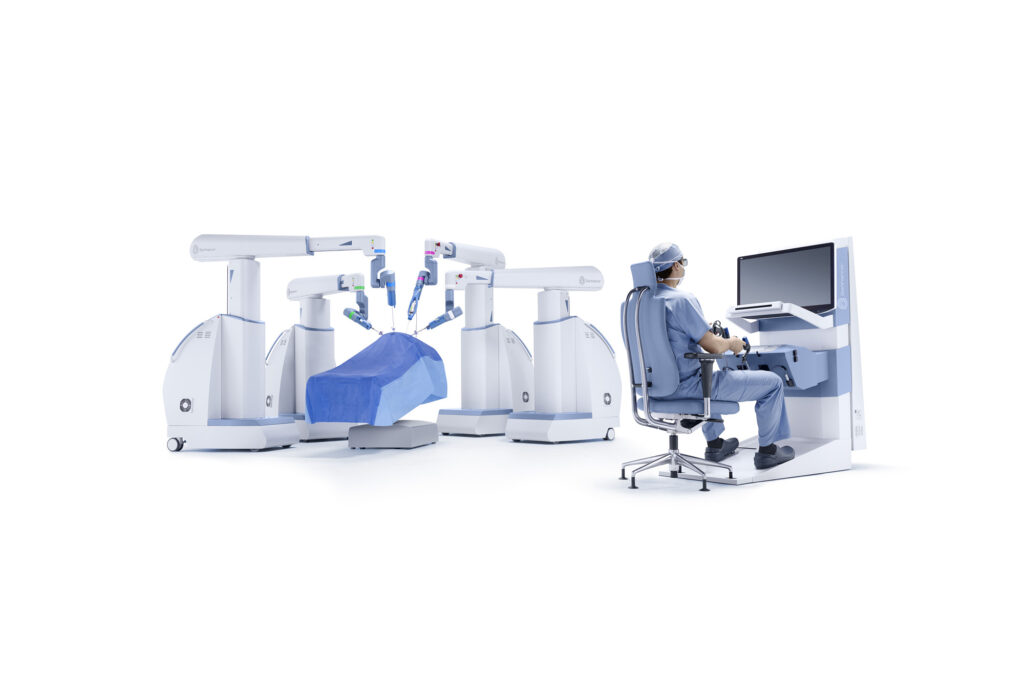
Release date: 2020.12.22
Development of the next generation of surgical support robots is progressing and is approaching the stage of practical use. In addition to the traditional function of minimally invasive surgery that reduces the burden on the body, the newly developed models also feature a variety of new innovations such as AI, digitalized data utilization, and tactile functions. Here we will introduce some of the models that are attracting attention.

Photo 1. hinotori Surgical Robot System
The development of surgical support robots is progressing due to the expiration of the patent for Da Vinci, which holds the top share of the global market. This is an opportunity for dozens of competitors who were unable to develop robots due to the Da Vinci patent.
The "hinotori TM surgical robot system" is attracting attention as Japan's first surgical support robots, and was released in early December this year (Photo 1). It was developed by Medicaroid, a company jointly owned by Kawasaki Heavy Industries and Sysmex.
The chick is composed of an "operation unit" equipped with four arms and an operation equipment "surgeon cockpit", which is small in size and easy to move. In addition, it is equipped with a network support function that monitors the operating status of chicks. It is possible to check from the outside whether the robot is operating normally during surgery, and troubles can be solved by remote support. In the Surgeon Cockpit, you operate the arm of the operation unit while viewing a high-definition 3D endoscopic image. The thickness of the arm is as thin as a human arm, it has eight joints, it has a high degree of freedom of movement, and it is controlled so that the arms do not collide with each other or the assistant next to the operating table. The arm to be operated can be switched with the foot pedal. In September of this year, urology such as prostate cancer will be covered by insurance, and on December 14, 2020, the first surgery (male in his 70s, removal of prostate cancer) will be conducted at Kobe University Hospital International Cancer Medicine and Research. It was done at the center and was successful. I would like to get the application to gastrointestinal surgery and gynecology by the end of September next year.

Photo 2. Senhans Digital Laparos Copy System
Prior to the launch of the "hinotori Surgical Robot System", the "Senhans Digital Laparos Copy System" (Senhans) appeared as the second surgical support robots following Da Vinci (manufactured and sold approved in May 2019). .. Developed by Transenterix of the United States, it is a robot equipped with three independent arms and a 3D camera, and the operator can remotely control it in a remote cockpit (Photo 2).
As a feature of operability, there is a tactile function that conveys the tension and pressure applied to the tip of the forceps to the operator's hand in the cockpit. You can feel the tension of the thread when suturing, and you can feel that the forceps are in contact with the organ, which reduces the risk of organ damage. At Senhans, the rigid scope, trocar, forceps, etc. used in existing laparoscopes can be reused, reducing running costs. In addition, because it is equipped with a line-of-sight tracking device, the endoscopic image displayed on the display can be switched by the movement of the operator's eyes.
Since Senhans is treated as a laparoscope for insurance coverage, all surgical procedures listed in the insurance as laparoscopic surgery can be performed as insurance medical treatment. By the way, Da Vinci is limited to 21 surgical procedures that are covered by insurance as robot-assisted surgery.
In addition, Verve Surgical, a joint venture between Alphabet, the parent company of Google in the United States, and Johnson & Johnson, is developing a futuristic surgical support robots that combines Google's AI (artificial intelligence) technology with Johnson & Johnson's surgical unit know-how.
MEDIUS Group is developing a business centered on the sale of medical equipment. We (Medical + us) involved in medical care also want to play the role of an information source (Media) that delivers useful information for the medical field and people's healthy tomorrow.